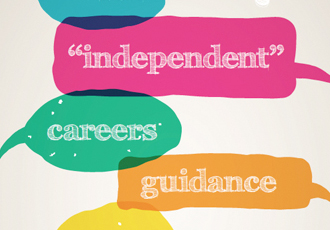I’ve always felt that good teachers are evident all the time, even outside of their classroom. It’s never a surprise, therefore, when I meet someone and can see immediately, even when they are not teaching, that they are or would make a good teacher. There is something about good teachers as human beings in general; how they interact, how they listen to people, how they give their time and eye contact to others, how they care about pupils’ wellbeing and potential.
All around the country, Secondary classrooms are peaceful and schools are going about their work as usual. Teachers are talking and students are (mostly) sitting politely, appearing to listen. Most teachers know that lecturing isn’t the most effective method of learning, so why do they default so readily to this tactic? What makes it so appealing, and what hidden messages does it give out?
[Original published on 30th June 2015]
When I first started teaching ICT most people said that it is one the easiest subjects to teach because students like playing on the computer. This is totally not the case; there is a big difference between playing on a computer for leisure purposes compared to passing an exam or coursework. The boundaries and guidelines teachers and students need to go through is strenuous and cause lots of teachers to spoon feed students through the learning process.
Managing your workload is something that, in my experience, most teachers and school leaders struggle with. There’s certainly no magic bullet. Some would even say that it’s impossible to get the balance between your professional and personal lives right, but that doesn’t mean you stop trying. It may be a journey rather than a destination.
Sun, sea, sand and student feedback. As relocations go, you can do a lot worse than Dubai. Liam Greenbank, teacher of IB Business Management & Economics at the Dubai American Academy, explains how he ended up going from grey Blighty to scorching UAE, and tells us about his experiences.

Choosing to become an international teacher is probably a more complex decision for most than it was for me. I was single, 25 years young and had been regretting for a number of years not travelling the world when I finished University. The cost of living in London was becoming more of a struggle than I had imagined, and I had also needed a change from teaching the English system. At the time I wasn’t enjoying the AS and A2 Business Studies courses on offer from certain examination boards, but I was lucky to get a brief taste of the International Baccalaureate (IB) a few years earlier when teaching in Liverpool. A taste I enjoyed.
Jane Basnett, Downe House’s head of MFL, returns to Innovate My School with a follow up to her piece on digital strategy. In this article, she discusses which methods she would implement to get the most out of the position.

So, here I am, in my not-so-new, not-state-of-the-art office with my brand new role of Digital Strategist. I need to oversee the implementation of a good Digital Strategy and in my original brief to my employer I stated that, in the first place, I would look at the teaching and learning that goes on. Now, I know that there is a great deal of good practice going on behind closed doors all round the school site. How to go about sharing it and making people open to such collaboration is another task.
For many there is a dislike and some mistrust about sharing ideas; it links, unfortunately, to the idea of lesson observation. There is nothing wrong with lesson observation per se, however, it has become synonymous with grading for staff and the dreaded OFSTED inspection. Lesson observation often sits uncomfortably in the mind-set of some colleagues. This is a small fence to overcome but I think I have the key to open the gate.

From last September, all secondary schools must provide “independent” and “impartial” careers guidance to pupils in years 9-11. This should include information on all options available for 16-18 education or training, including apprenticeships.
This article looks at what is meant by “independent guidance”, and how schools might best provide it. It is based on the findings of a pilot Transitions Programme, carried out in secondary schools between September 2011 and March 2012, and funded by the RSA.

The government’s vision is to improve social mobility so that no-one is prevented from fulfilling their potential. As part of their Strategy for Social Mobility, new destination measures are being introduced for Key Stage 4 and 5 students which will focus on their progress after leaving school, college or a training provider.
The new destination measures will ensure that all students:
Achieve qualifications which provide them with the best opportunities for their future
Receive the help, support and advice necessary to enable them to make choices about their next steps in education, training and/or employment and make successful transitions.

Careers Education, Impartial Advice and Guidance, Work Related Learning and Enterprise are all subjects when done well require input from employers. Previously there has been a plethora of organisations who were placed to be that link between education and employers, EBP’s who could put on a Careers Fair, Dragons' Den or Work Experience programme to meet the needs of the school. Sadly, in many cases they have gone, and so too has the budget to buy in such services.
Schools are left with a choice: to continue to deliver an enriched programme of learning or to bring it down to the statutory basics and offer a very limited CE/IAG curriculum. In some schools it is the fear of the planning and employer engagement that leads this decision.

A community-driven platform for showcasing the latest innovations and voices in schools
Pioneer House
North Road
Ellesmere Port
CH65 1AD
United Kingdom